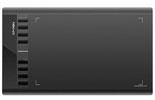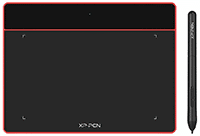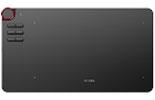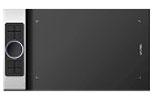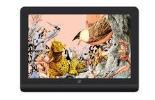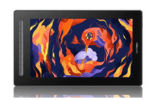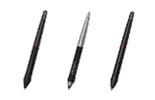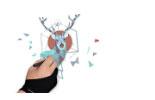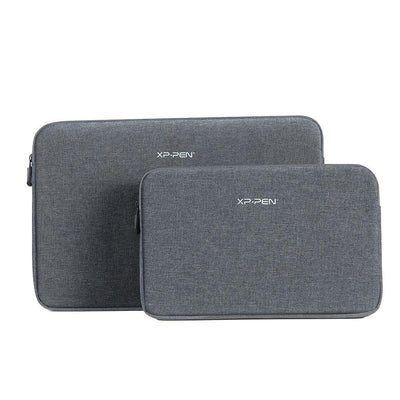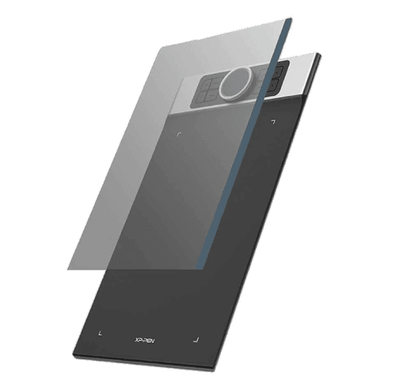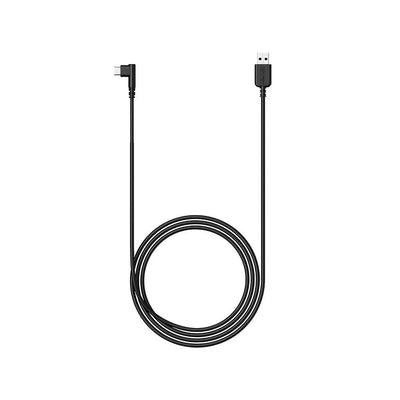What are Standalone Drawing Tablets?

Standalone drawing tablets have become increasingly popular among artists and creators in recent years.
These devices offer a unique and versatile way to create digital artwork without the need for a computer or other external devices.
In this article, we will delve into the world of standalone drawing tablets, exploring their definition, key features, advantages, how to choose the right one, how to use them effectively, and troubleshooting common issues that may arise.
Understanding Standalone Drawing Tablets

Before we dive into the details, it's crucial to understand what standalone drawing tablets are. Simply put, they are portable devices that combine the functionality of a drawing tablet with a built-in display.
This means that you can directly draw on the screen using a stylus, similar to how you would use pen and paper.
Standalone drawing tablets eliminate the need for a traditional mouse or keyboard, allowing artists to have a more intuitive and natural drawing experience.
Standalone drawing tablets have revolutionized the way artists create digital art. With their lightweight and portable design, they have become the go-to choice for artists who need to work on the go or prefer to have a separate device dedicated solely to their creative endeavors.
These tablets offer a level of convenience that traditional drawing tablets cannot match.
- Definition and Basic Features
Standalone drawing tablets are lightweight and portable, making them ideal for artists who need to work on the go or prefer to have a separate device dedicated solely to their creative endeavors.
These tablets typically feature high-resolution displays that accurately represent colors and details, providing a realistic canvas for artists to work on.
Additionally, they are equipped with pressure-sensitive pens that allow for varying line thickness and opacity, mimicking the experience of using traditional drawing tools.
One of the standout features of standalone drawing tablets is their high-resolution displays. These displays are designed to accurately represent colors and details, ensuring that the artist's work is displayed as intended.
Whether it's vibrant landscapes or intricate character designs, the high-resolution display of a standalone drawing tablet brings every detail to life.
Another important feature of standalone drawing tablets is the pressure-sensitive pen. This pen allows artists to apply varying levels of pressure when drawing, resulting in different line thicknesses and opacities.
This level of control is crucial for artists who want to achieve a more realistic and nuanced drawing experience. With a pressure-sensitive pen, artists can create stunning artwork with depth and dimension.
- Key Components of Standalone Drawing Tablets
There are several essential components that make up standalone drawing tablets. The first is the display, which is usually an LCD or OLED screen that can be touch-sensitive or pressure-sensitive.
The display is the artist's canvas, and it plays a crucial role in the overall drawing experience. A high-quality display ensures that the artist's work is accurately represented, allowing them to create art with precision and confidence.
The stylus, also known as a pen, is another crucial component of standalone drawing tablets. It is designed to be comfortable to hold and often comes with programmable buttons for quick access to frequently used functions.
The stylus is the artist's tool, and its design and functionality can greatly impact the drawing experience. With a well-designed stylus, artists can work for hours without discomfort, allowing them to fully immerse themselves in their creative process.
Additionally, standalone drawing tablets may have built-in speakers, USB ports, and expandable storage options to enhance the user experience.
These additional features provide artists with the flexibility and convenience they need to fully unleash their creativity.
Whether it's listening to music while drawing or easily transferring files, these extra components make standalone drawing tablets versatile and user-friendly.
The Advantages of Using Standalone Drawing Tablets
Now that we have a better understanding of what standalone drawing tablets are, let's explore the advantages they offer to artists and creators.
- Flexibility and Mobility
One of the greatest advantages of standalone drawing tablets is their portability. Artists no longer need to be confined to their studios or desk spaces to create artwork.
With standalone tablets, they can take their creativity wherever they go.
Whether it's sketching in a coffee shop, drawing in nature, or simply working from a comfortable spot at home, the flexibility and mobility provided by standalone drawing tablets allow artists to find inspiration in various settings.
Imagine an artist sitting in a bustling coffee shop, sipping on their favorite drink while sketching away on their standalone drawing tablet.
The ambient noise, the aroma of freshly brewed coffee, and the presence of other people can all contribute to the artist's creative process.
The ability to work in different environments can stimulate new ideas and perspectives, resulting in unique and captivating artwork.
Furthermore, standalone drawing tablets are lightweight and compact, making them easy to carry around.
Artists can slip them into their bags or backpacks without any hassle, ensuring that they always have their creative tool at hand.
This portability also allows artists to participate in art events, workshops, or collaborations, where they can showcase their work and connect with other artists.
- Advanced Drawing Features
Standalone drawing tablets are equipped with advanced features that open up a world of possibilities for artists.
These devices often offer multi-touch functionality, allowing artists to use gestures, zoom in, and rotate their artwork easily. Some standalone tablets also support tilt sensitivity, enabling artists to create more realistic and natural brush strokes.
Imagine an artist using a standalone drawing tablet with multi-touch functionality. They can use their fingers to pinch and zoom in on specific details of their artwork, ensuring precision and accuracy.
With a simple swipe or pinch gesture, they can navigate through their canvas effortlessly, making the creative process more intuitive and fluid.
Additionally, the tilt sensitivity feature of standalone drawing tablets adds another layer of realism to the artist's work.
By tilting the stylus, artists can mimic the angle and pressure of traditional drawing tools, such as pencils or brushes. This allows for a greater range of expression and enables artists to create textures and shading that closely resemble traditional media.
Moreover, standalone drawing tablets often come with customizable software and programmable buttons. Artists can tailor their workspace and tools to suit their specific needs and preferences.
They can create personalized workflows and shortcuts, streamlining their creative process and enhancing their efficiency.
This level of customization empowers artists to fully immerse themselves in their work and unleash their creativity without any limitations.
Choosing the Right Standalone Drawing Tablet

With the plethora of standalone drawing tablets available in the market, choosing the right one can be overwhelming. However, considering a few key factors can help you make the best decision for your artistic needs.
- Factors to Consider
When selecting a standalone drawing tablet, consider factors such as the size of the display, resolution, color accuracy, and pen sensitivity.
Some artists may prefer smaller, more portable tablets, while others may prioritize larger screens for detailed work. It's also important to evaluate the device's battery life, storage capacity, and compatibility with different software applications.
- Popular Brands and Models
There are numerous reputable brands producing high-quality standalone drawing tablets. Some notable ones include Wacom, Huion, and Apple.
Wacom's Cintiq Pro and MobileStudio Pro series are renowned for their exceptional quality and functionality. Huion's Kamvas Pro and Kamvas Studio series offer competitive features at more affordable price points.
Apple's iPad Pro, paired with the Apple Pencil, has become a popular choice among digital artists due to its seamless integration and intuitive user interface.
How to Use a Standalone Drawing Tablet
If you're new to standalone drawing tablets, getting started may seem intimidating. However, fear not, as we will provide you with some useful tips and guidance to help you unleash your creativity.
- Getting Started
First and foremost, familiarize yourself with the tablet's interface and features. Take some time to explore the settings and customize them to suit your preferences.
Next, practice using the stylus to get a feel for its sensitivity and pressure levels. Experiment with different brush types and settings to discover your preferred style and technique.
It's also beneficial to watch tutorials or take online classes to learn new skills and gain inspiration from other artists.
- Tips for Efficient Use
When using a standalone drawing tablet, keep in mind some tips to optimize your workflow and maximize your productivity.
Keep your workspace clean and organized, ensuring that you have access to the tools and resources you need. Take regular breaks to rest your hand and prevent strain. Utilize layers and different drawing techniques to create depth and dimension in your artwork.
Finally, don't be afraid to experiment and take risks – the beauty of digital art lies in its endless possibilities.
Troubleshooting Common Issues with Standalone Drawing Tablets

Like any electronic device, standalone drawing tablets may encounter technical difficulties or require maintenance and care to ensure their longevity.
Let's address some common issues and provide solutions to keep you creating without interruption.
- Technical Difficulties and Solutions
If you experience lag or delay in your strokes, try adjusting the tablet's settings to optimize performance. Be sure to install the latest drivers and updates provided by the manufacturer.
It's also important to keep the device clean, regularly removing any dust or debris that may accumulate on the screen or in the ports.
- Maintenance and Care Tips
To prolong the lifespan of your standalone drawing tablet, handle it with care and avoid dropping or exposing it to excessive heat or moisture.
Invest in a protective case or cover to safeguard the device when not in use. Clean the screen gently using a microfiber cloth to remove smudges and fingerprints.
Additionally, regularly check for firmware updates released by the manufacturer to ensure your tablet's optimal performance.
In conclusion, standalone drawing tablets offer a world of possibilities to artists and creators. With their portability, advanced features, and intuitive interfaces, these devices revolutionize the way art is created in the digital realm.
By understanding their features, advantages, and how to choose the right tablet for your needs, you can embark on a journey of artistic exploration and take your creations to new heights.

